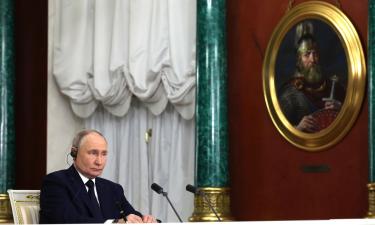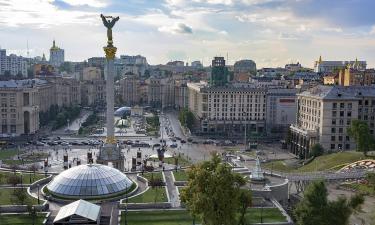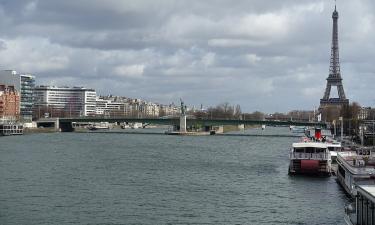CIA created map of Moscow and presented it to Moscow authorities
People often use some things, while not asking themselves about these things’ origin. In the meanwhile, their story could very curious. We are accustomed to using Moscow map: there is such a map in almost every house. While not many people know that the first detailed version of the map was made by CIA.
After WW II, the US government charged their special services to work out a detailed map of Moscow. This map was meant for workers of US embassy. Though, it hardly could be made without the Soviet authorities assistance. So, Americans addressed to the Soviet Government. US side wrote in its note, that chaotic gathering of streets, lanes and dead ends made difficult to US diplomats orienting in the city and seriously impeded them to carry out their work, by making them be late for some important meetings. Actually, Moscowites had similar troubles, as well as Moscow visitors. Moscow was growing very fast. Newcomers had to ask almost everybody they met the way. But Moscow born and bred, who knew Moscow in the limits of Sadovoye Koltso (Garden Ring) did not feel confidently while getting to new districts.
Feeling a bit panic stricken, the Government carried out a sitting and agreed to creation of the map. The scope of the work which Americans were in turned out to be much serious than CIA had expected. A group of topographers started to work: they searched for information in all possible ways. As one of the sources, they even used captured German war maps.
Cartographers had to make great efforts to unite pieces of information they possessed: thousands of small streets, lanes, dead ends. The work was being slowed down, because many streets had changed their names having been called after heroes of Great Patriotic War and leaders of world communist movement. Even great specialists lost themselves in the great amount of changing information.
Translators worked together with cartographers, who tried to give English variants of complicated titles. The word ulitsa (street) could be easily translated into English, though, how to translate such words as val (bank or wall, which, probably, existed in old Moscow), proseka (glade or cutting in a forest), tupik (dead end, blind alley)? So, translators also used Cyrillic alphabet. Only in 1953, the work was finished and a detailed and trustworthy map of Moscow appeared. The biggest part of the edition arrived in the US embassy, whose workers were asked for comments and amendments. The rest was sent to Moscow governmental institutions and special services. At first, only these structures could possess this map, who, from understandable reasons, did not want to let this map out. Though, in some time, having been made sure of lack of any dirty tricks in it, they allowed to publicly spread it. The Soviet Government permitted to Soviet cartographers to complete the map and to prepare it for public spreading. That maps, however, were too simplified and gave only general picture, while pointing out the Kremlin, museums, and great shops, like GUM and TSUM.
The map, certainly, was being constantly added and perfected. The real shock for the specialists was in the 1950s: 6-million Moscow absorbed neighbouring villages, like Cheremushki and others. Within several months, city districts of 5-story houses appeared, where there were many houses with one number and numerous sub-numbers. The building was still chaotic: great areas were being filled with numerous houses, similar to each other, with sudden break in numbering, with strange district names repeating the names of taken down villages.
FBI workers did their best to obtain necessary information. While Moscow authorities did not try to simplify their work. It was more profitable for them, without additional efforts, to get what they should have done on themselves.
Economical and political relations between the two countries were expanding, the staff of the US embassy was growing, too. At the same time, the edition of the map was growing. Now, they were being spread in the embassies of US allies and became accessible for businessmen and tourists.
The 1974 map was seriously changed, when pocket version of atlas became a norm. Instead of one page, it was transformed into 60 fragments stitched in a small hand-book. All individual peculiarities of Moscow were noticed in the map: underground lines, railway stations, highways, embassies, governmental buildings, hotels, museums, restaurants, even cemeteries with graves of famous people. The edition had 140 pages. This was a very important order for the intelligence: that summer, US President Richard Nixon visited Moscow. Later editions were added with information from below Moscow centre and some useful data. For example, on the reverse side of the map, there were fragments of city districts, alphabet list of the streets, addresses of embassies, governmental institutions, plan of the underground.
Cartographers tried to change the map, by imparting geometrical view to it, to which foreign citizens are accustomed. Therefore, a graticule appeared to simplify the search. The structured pocket hand-book became the best variant of the map. Ambitious Americans even compromised: in the map, there is no hint at the FBI participation, not to confuse Soviet citizens.
The 1980 version of the map possessing 203 pages contains even smaller details: filling stations, car services, churches… The map was issued because of the Olympic Games and increasing of Americans’ flow.
Severn years later, a new added 214-page version of the map appeared. In this map, the centre of Moscow was marked with more details.
In 1989, Soviet cartographers produced, finally, 250 thousand copies of folding Atlas of the Tourist, which was a detailed edition in a soft jacket, similar to the CIA version. Now, maps are regularly issued in Russia.
Vladimir Kalinichev Moscow
Translated by Vera Solovieva
Read the original in Russian: https://www.pravda.ru/main/2002/06/22/43043.html
Subscribe to Pravda.Ru Telegram channel, Facebook, RSS!





